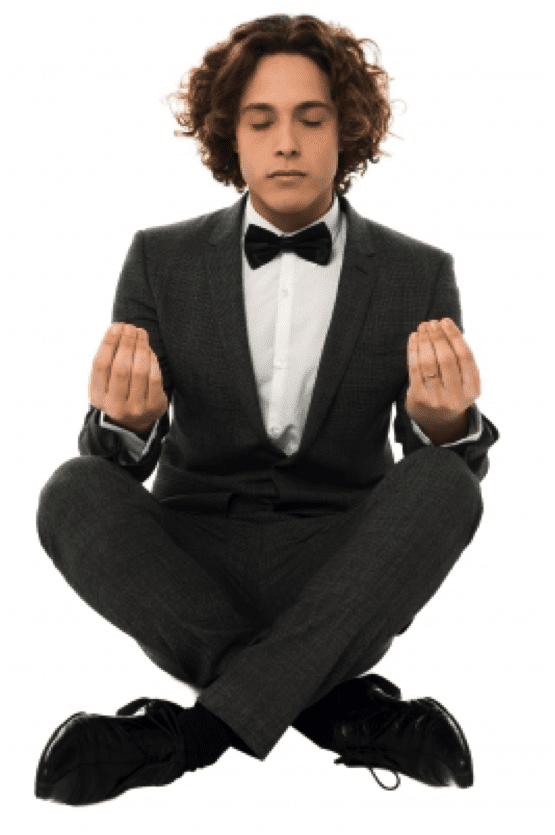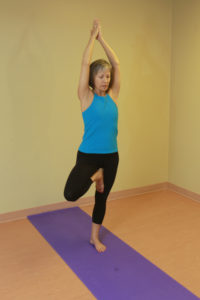In last week’s blog, Mindfulness — In Pursuit of Wisdom, I equated mindfulness or calm awareness in the present moment to an elevated state of consciousness. Being conscious of one’s thoughts, words and deeds and their impact in the world provides significant lessons along our journey into wiser, kinder people. As science has proven, mindfulness in the form of meditation grows the brain. We alter the brain and slow down its aging process when we alter our negative response patterns.
For the most part, meditation and yoga asanas (postures) are the predominant practices for cultivating single-pointed concentration and calm awareness. Meditation is viewed as mental training with meditators traditionally focusing on single sources such as the breath, a part of the body (heart, liver, hand), a sensation, a candle flame, a mantra, etc. The purpose in holding one’s focus is to quiet the mind, the body and the breath from their reactive and habitual fight or flight responses, that is, to enter the silence.
Although training the mind to not react through the use of focused concentration is a more prevalent form of meditation, another less typical technique is also practiced — to be present, to be completely open. Rather than using effort to focus your awareness, you listen. Listening in this way, present and open, is effortless. You will know you are listening openly when you are not composing happy, sad, frightening or any other states in your mind. The quiet or silence realized is not manufactured or controlled.
Most people have a “profound resistance” to silence, which is counterproductive if they are keen on learning, growing and becoming self-aware. Wisdom awaits us in the silence. Our true nature exists in the silence. We are not the thoughts, feelings and body that most of us claim as our identity. Rather, we are the consciousness waiting to be awakened in the silence, which is ultimately the purpose of meditation — to awaken us to our true nature.
In my opinion, if you do not know your true nature, you will not know and express your full potential nor will you fully experience life. This is hardly a new thought as Plato (427 BC) claimed “All knowledge is self-knowledge.” Thus, your true nature is neither quiet nor silent. But, to be heard and experienced, it requires you to enter the silence. Silence is the ultimate teacher of Truth, and is always there.
Returning to the core, the root of your own self, and seeing through
everything that you take yourself to be, allows even your most sacred
identities to drop away. There is such beauty in discovering what we
can do without.
When you find the courage to allow yourself to return to the essential
[silence], you are actually returning to the very root of your own self.
. . . let go of everything, and then your true nature is realized.
Adyashanti
In case you are wondering which reactive and habitual responses would be healthier and wiser to let go, Jeff Haden shares his own list below, which I have partially altered.
10 Commandments to Stop Doing:
1. Blaming
2. Impressing
3. Comparing
4. Interrupting
5. Whining
6. Controlling
7. Judging
8. Preaching
9. Dwelling
10. Fearing
As science has also proven, it takes less effort to do something we enjoy than to stop doing something that is a habit — whining, overeating, smoking, muscular holding, etc. When we meditate in this effortless way of being present and open, we are simultaneously releasing our addictive habits. We are altering our brain. If you wish to experience this effortless listening meditation, try the technique below.
Find a comfortable position either seated or lying down with a small support under your head to ease your breathing. Set a timer for 30 minutes. It takes the body and breath at least 30 minutes to relax and quiet. Uncross your hands and feet so your blood can flow freely throughout your body. Close your eyes and begin to allow your awareness to drop into your inner experience. Initially, noticing sensations in your body and taking your awareness to those sensations can help you rest your awareness inside yourself.
Already you may have discovered your own resistance to silence, which usually shows up in the form of random thoughts popping into your mind. Each time this occurs, silently ask yourself this question “What is the truth?” When the brain/mind does not have an answer, we are immediately taken to silence, which is the place where “thinking or searching for the right emotional experience fails.” Let yourself rest in this silence. If you notice your mind trying to lead you elsewhere, just repeat the question to yourself, “What is the truth?” Be forewarned by Adyashanti’s teaching — “As soon as you want something from the silence, you are moved outside of silence again.” Just keep returning yourself to the silence and resting there.
When the timer rings, once again notice any sensations in your body. Note if and how change is being experienced in your body.
For those who may wonder at the scientific validity and significance of mindfulness or consciousness, you might want to read Dr. Robert Lanza’s book titled Biocentrism: How Life and Consciousness are the Keys to Understanding the Nature of the Universe. The theory of Biocentrism professes that consciousness creates the material universe rather than the opposite. It further explains this intelligence we call consciousness existed prior to matter, and it (life) does not end when the body dies. It lives forever.
If what you have read up to this point has ‘crashed’ some of your old beliefs, then I would be curious to hear your reactions, or should I say your calm awareness, to the following —
There is no such thing as a true belief.
. . . the thought arose in the mind out of emptiness, and only if you accepted
it as true could it start a battle. But you see clearly it really isn’t true: it’s
just a spontaneous arising of thought. It won’t be true unless you believe it
and bring it into the story of the heroic spiritual seeker’s struggle. As soon
as you involve yourself in the seeker’s struggle, you’ve already lost the war.
Adyashanti
What beliefs did you let go of when you realized they were not true?
For more on mindfulness techniques and conscious business tools, click here.





